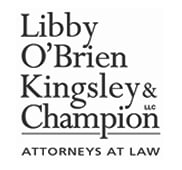The Maine Supreme Judicial Court recently decided Almeder v. Town of Kennebunkport. The closely-watched and protracted case concerned the use and ownership of Goose Rocks Beach in Kennebunkport. First filed in 2009, the case wound through the Maine courts for two phases of trials and an appeal to the Supreme Court before reaching the Court again in 2019. In this most recent and likely final decision, the Court rejected the arguments of waterfront property owners that claimed title to the beach, concluding instead that the Town owned the beach.
Aside from the practical result—that the public will now be free to use most all of Goose Rocks Beach—the opinion is noteworthy for a comprehensive legal and historical discussion and analysis. It is highly recommended reading for beach enthusiasts and history buffs alike. Authored by Justice Thomas E. Humphrey, the opinion dissects what is a beach, and how the law treats areas of coastal property differently depending on the water, tides, sand, and the unique geological features of the land.
The opinion concisely traces the historical ownership of property in modern-day Maine back to land grants by the English Crown to settlors that later organized the lands under the authority of the Massachusetts Bay Colony. Given the transformational changes in government, ownership, and development occurring in the 17th and 18th centuries, and highly inconsistent recordkeeping, determining exactly who or what owned the beach was hard. Although the chain of ownership from the Crown to Kennebunkport could not be called linear, the Court’s decision made do with an ambiguous record.
The decision largely turns on the meaning of “sea wall” and the presumptions that apply to waterfront property conveyances. Goose Rocks Beach has both man-made and natural topographical features forming a sea wall, which Justice Wayne Douglas, the trial judge, found to be the seaward boundary of the waterfront property owners’ lots. Because the waterfront property owners’ deeds contained a call to the “sea wall” rather than the ocean or sea, the owners could not benefit from the legal presumption that the deed gave them title to the low water mark.
In the absence of a specific conveyance of the area between the sea wall and the low water mark, the question arose: if the waterfront owners don’t own the beach, who does? The Court concluded that the Town took ownership of the beach essentially by default through grants of “common and undivided lands” held by early proprietors of the town. The proprietors, acting like trustees, assumed control of land for public benefit over the decades and centuries that municipalities were formed and attempted to “clean up” otherwise uncertain titles and unclaimed land. Among the unclaimed common and undivided land was the beach, at least according to the Court’s best effort to clarify rights obscured by the sands of time.
In other words, Goose Rocks Beach constituted leftovers. Those leftovers are quite a treasure that is now, under the Court’s decision, for the public to enjoy.
